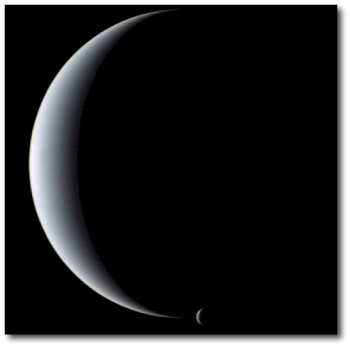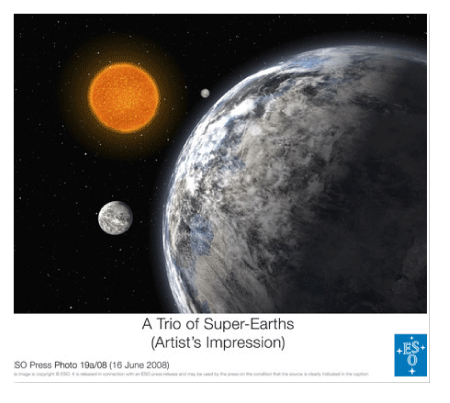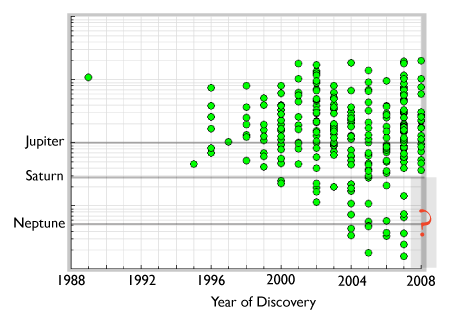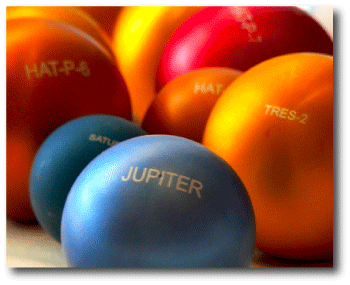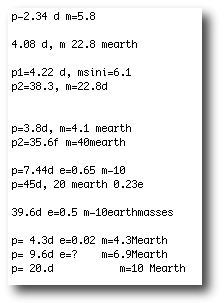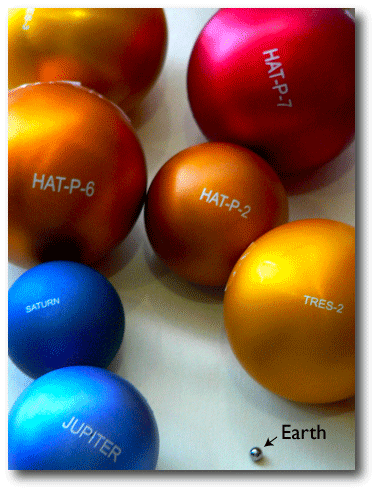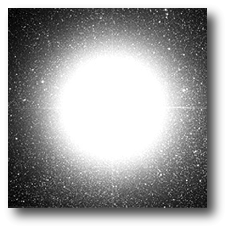
Philippe Thebault sent me a link to an article on the Alpha Centauri planet search published earlier this month in the Frankfurter Allgemeine Zeitung. The text is in German, but the Google translator does a passable job of getting the gist across.
I got my first inkling of the Geneva Planet Search’s Alpha Centauri campaign through Lee Billings’ article in Seed Magazine. (See this post). In the Frankfurter Allgemeine article, Francesco Pepe gives further details — Alpha Cen B is one out of ten stars that are receiving special scrutiny for terrestrial planets at HARPS. They are getting one observation every two weeks, meaning that the star is being hit roughly one out of every two of their planet search nights:
“Allerdings müssen wir uns Harps mit anderen Gruppen teilen”, sagt er. Zudem ist Alpha Centauri B nur einer von zehn Sternen, die sie auf erdähnliche Planeten absuchen wollen. “Aber alle zwei Wochen schauen wir damit auf Alpha Centauri, und das Gerät ist sehr effizient.”
This quote implies that my speculations regarding the Geneva team’s data collection rate on Alpha Cen B were somewhat overheated. Instead of getting 100 ultra-high-precision HARPS velocities per year, it looks like a more realistic estimate of their current rate is 25 velocities per year. Since signal-to-noise increases as the root of the number of observations, this means that the minimum mass threshold for Alpha Cen Bb at any given time is approximately doubled relative to my estimates at the beginning of the Summer. Instead of arriving at 2.5 Earth masses in the habitable zone a bit more than a year from now, they’ll be at roughly 5 Earth masses.
Now nobody likes backseat drivers. As the saying goes, “theorists know the way, but they can’t drive”, and theorists have had a particularly dismal record in predicting nearly everything exoplanetary.
But nevertheless, I’m urging a factor-of-four increase to that data rate on Alpha Cen B. I would advocate two fully p-mode averaged velocities per night, 50 nights per year. I know that because Alpha Cen B is so bright, the duty cycle isn’t great. I know that there are a whole panoply of other interesting systems calling for time. It is indeed a gamble, but from the big-picture point of view, there’s a hugely nonlinear payoff in finding a potentially habitable planet around Alpha Centauri in comparison to any other star.
During the next few months, it’s inevitable that one of the numerous Super-Earths that have been turning up in the radial velocity surveys will be announced to be observable in transit (see, e.g. this post). When that occurs, we’ll effectively have had our last first look at a truly new category of planet — the logarithmic mass interval between Earth an Uranus is currently by far the largest among the 70-odd planets that have accurately determined radii. My own guess is that the emerging population of super-Earths will be better described as a population of sub-Neptunes. That is, the transit depths will indicate compositions that are largely water.
So if 5-Earth mass planets turn out to be primarily water-based rather than rock-based, it’s (in my mind) an argument in favor of cranking up the data rate on Alpha Cen B. There were no structurally substantial quantities of water in the Alpha Cen planet-forming environment. If we’re seeing sub-Neptunes rather than super-Earths in the HD 40307, Gliese 581, et al. systems, then the odds are heightened that any planets orbiting Alpha Cen B are less than 2 Earth masses. There’s no payoff in tuning your Alpha Cen B strategy for sub-Neptunes. Finding truly terrestrial-mass planets will require paying full freight.
In the early nineteenth century, the detection of stellar parallax was a problem fully equivalent in both scientific excitement and prestige to the modern-day detection of the first potentially habitable extrasolar planet. I think it’s worth noting that the prize of discovery of the first stellar parallax went not to the eminently capable (but overly cautious and slow-moving) observer who accumulated data on the best star in the sky, but rather to an observer who focused on a rather obscure star in the constellation Cygnus.
Here’s a link to the article, “Thomas Henderson and Alpha Centauri” by Brian Warner of the University of Cape Town.


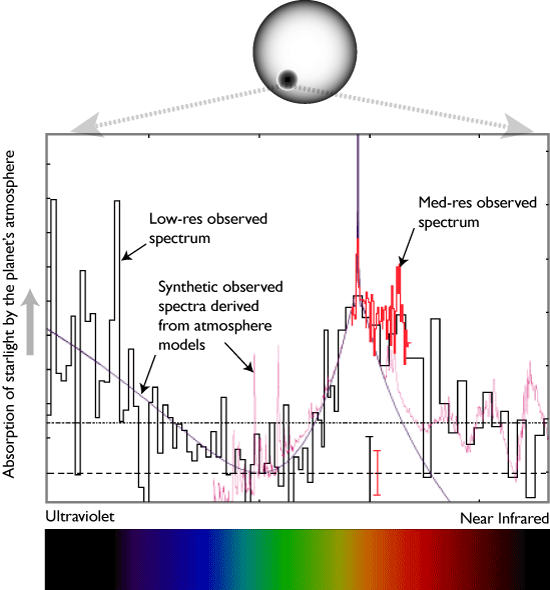
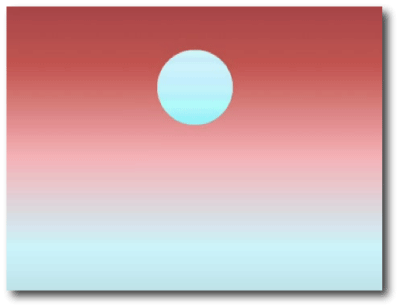
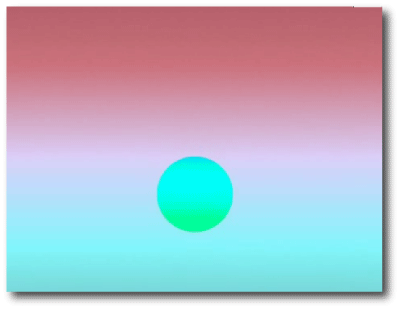
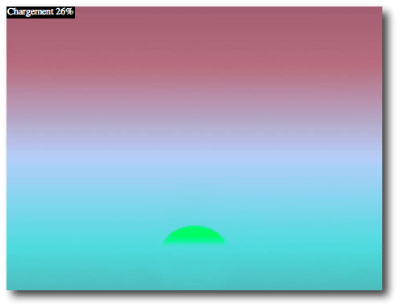

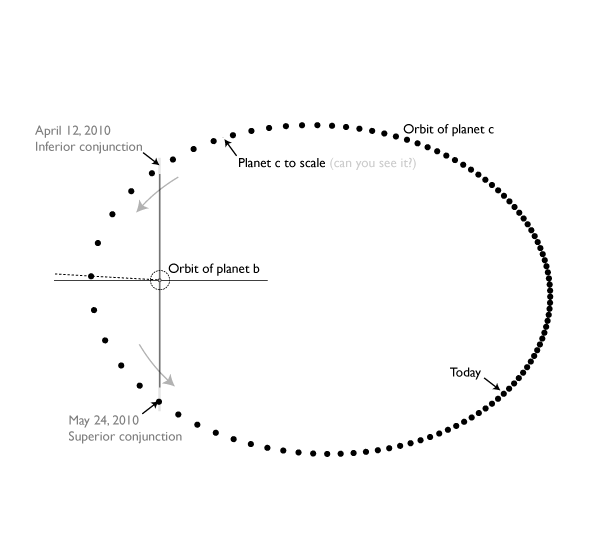



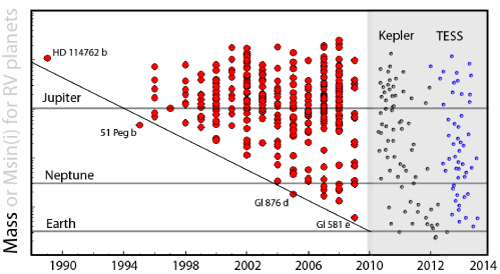
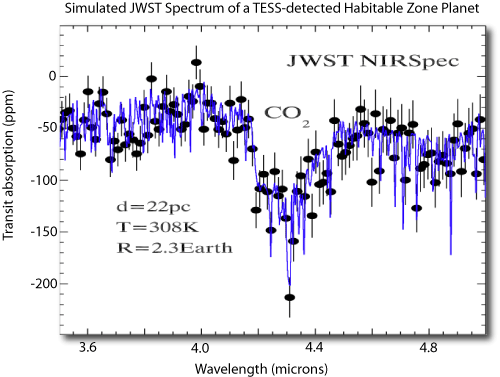

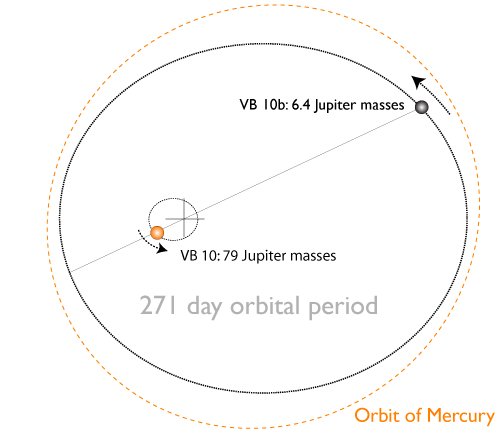
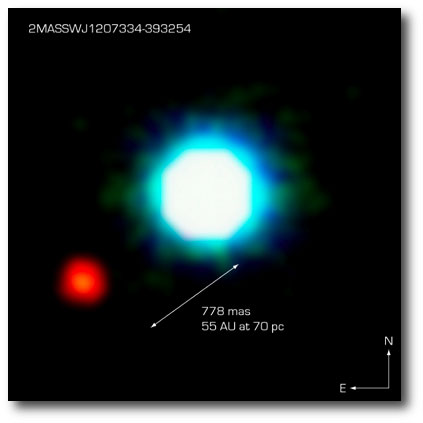
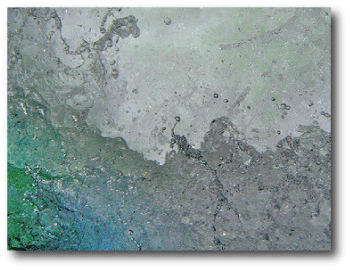
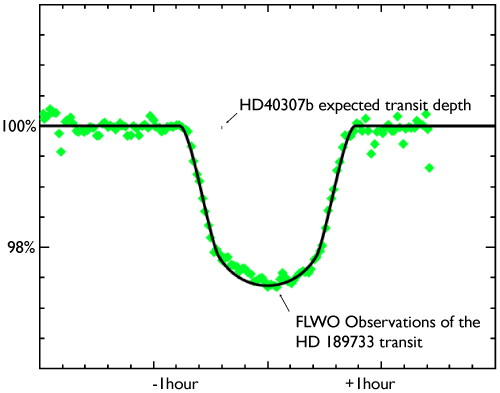
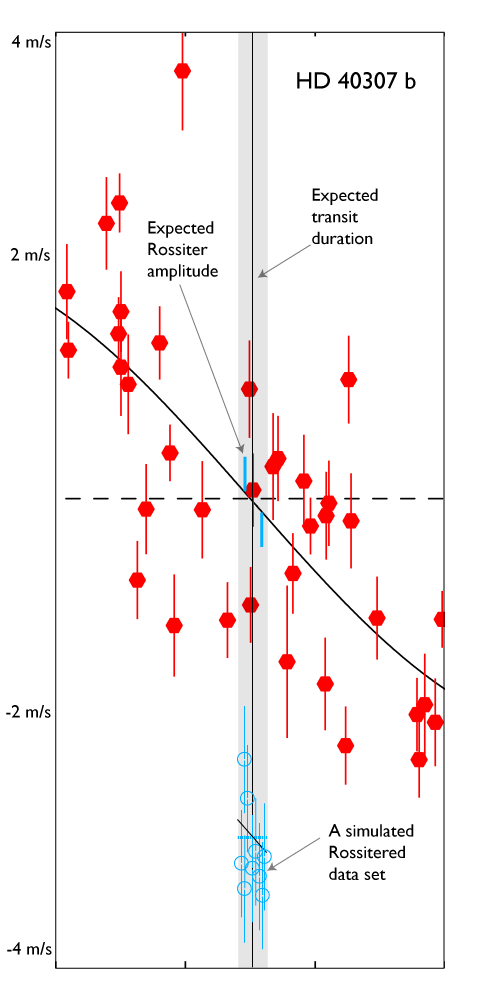 In this case, the economics are a bit steeper, but still viable. At the current dollar-euro exchange rate, I’d estimate that USD 15K is a fair price for a HARPS night. (Forgive all this yak yak about currency — as an American traveling in Europe at the moment, I’m rather shocked to be seeing $6.24 0.7l bottles of water at the airport newstand!). One would need 4 hours, or half a night to observe the transit and get adequate baseline. To be at least four-sigma sure, you’d want to rack up ~20 full transits (which would take quite a while). Factoring in the expectation value of 0.07 arising from the transit probability, this works out to a USD ~2M detection.
In this case, the economics are a bit steeper, but still viable. At the current dollar-euro exchange rate, I’d estimate that USD 15K is a fair price for a HARPS night. (Forgive all this yak yak about currency — as an American traveling in Europe at the moment, I’m rather shocked to be seeing $6.24 0.7l bottles of water at the airport newstand!). One would need 4 hours, or half a night to observe the transit and get adequate baseline. To be at least four-sigma sure, you’d want to rack up ~20 full transits (which would take quite a while). Factoring in the expectation value of 0.07 arising from the transit probability, this works out to a USD ~2M detection.